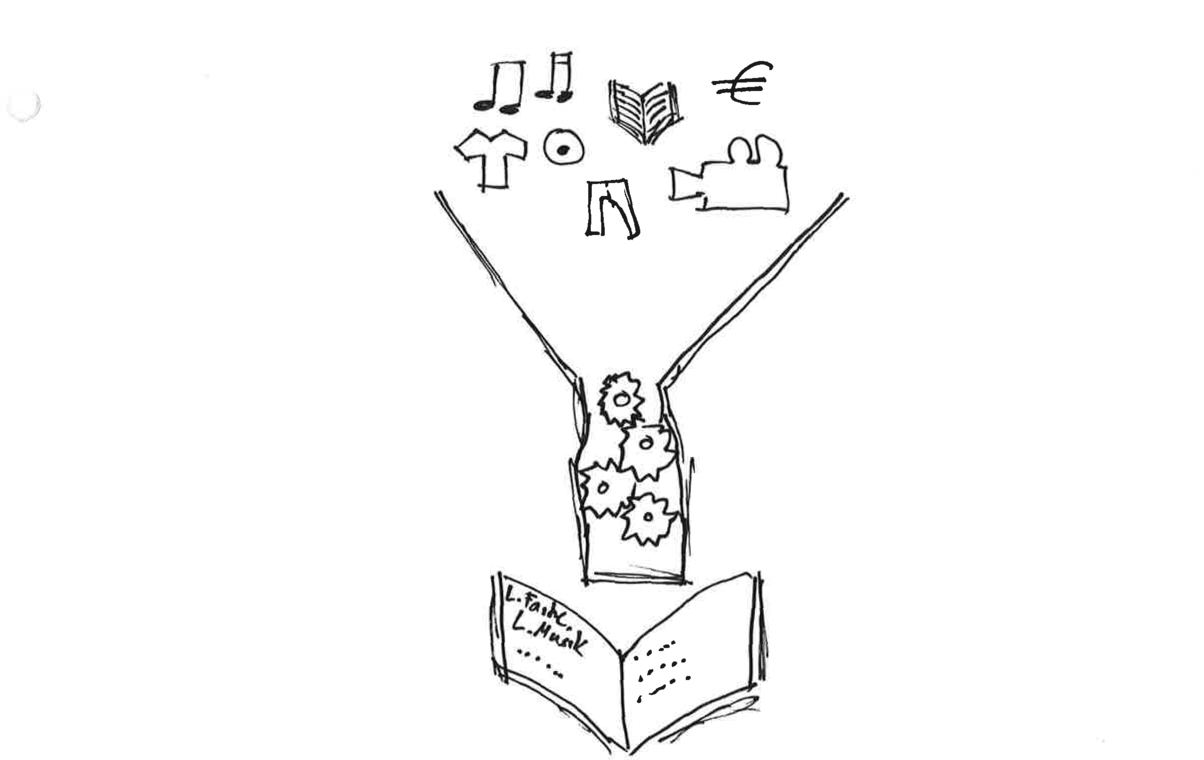An algorithm, drawn by a 24-year-old male bachelor agriculture student in Germany.

Yes. Now the question again: Can you explain to me what you drew? Well, I tried to portray it a bit like a funnel, where all the information that is somehow available about you is collected. What music do I listen to? This is supposed to be a DVD [laughs]. What do I order for DVDs, what kind of clothes do I have? What do I read on the Internet? What kind of books do I order? Maybe also in which price ranges do I search for something? What kind of movies do I watch on Netflix or YouTube? And somehow in a black box that none of us can look into. That's this/ These are supposed to be gears. Here are the gears that process that? These are gears that process that and in the end this algorithm, which records the data in whatever way, clearly catalogs what my preferences are and what can best be shown to me. Okay. And that's this book that's open here. Exactly, it should be like such a book. Right. Super. Then I ask again in general: How did you learn about how algorithms work? I had once in the ninth grade/ what was it called? Computer science, one semester long. And there we once got a task about an algorithm that was programmed. So we had done that at that time on the basis of some map or some navigation device. It [the algorithm] gets the task: "Find that and the destination and do it in the shortest way." And that he just tried out all the possibilities. I really don't know more than that. Okay. So the last time by the school/ That you actually came into contact? Exactly. Consciously I didn't look at it anymore.